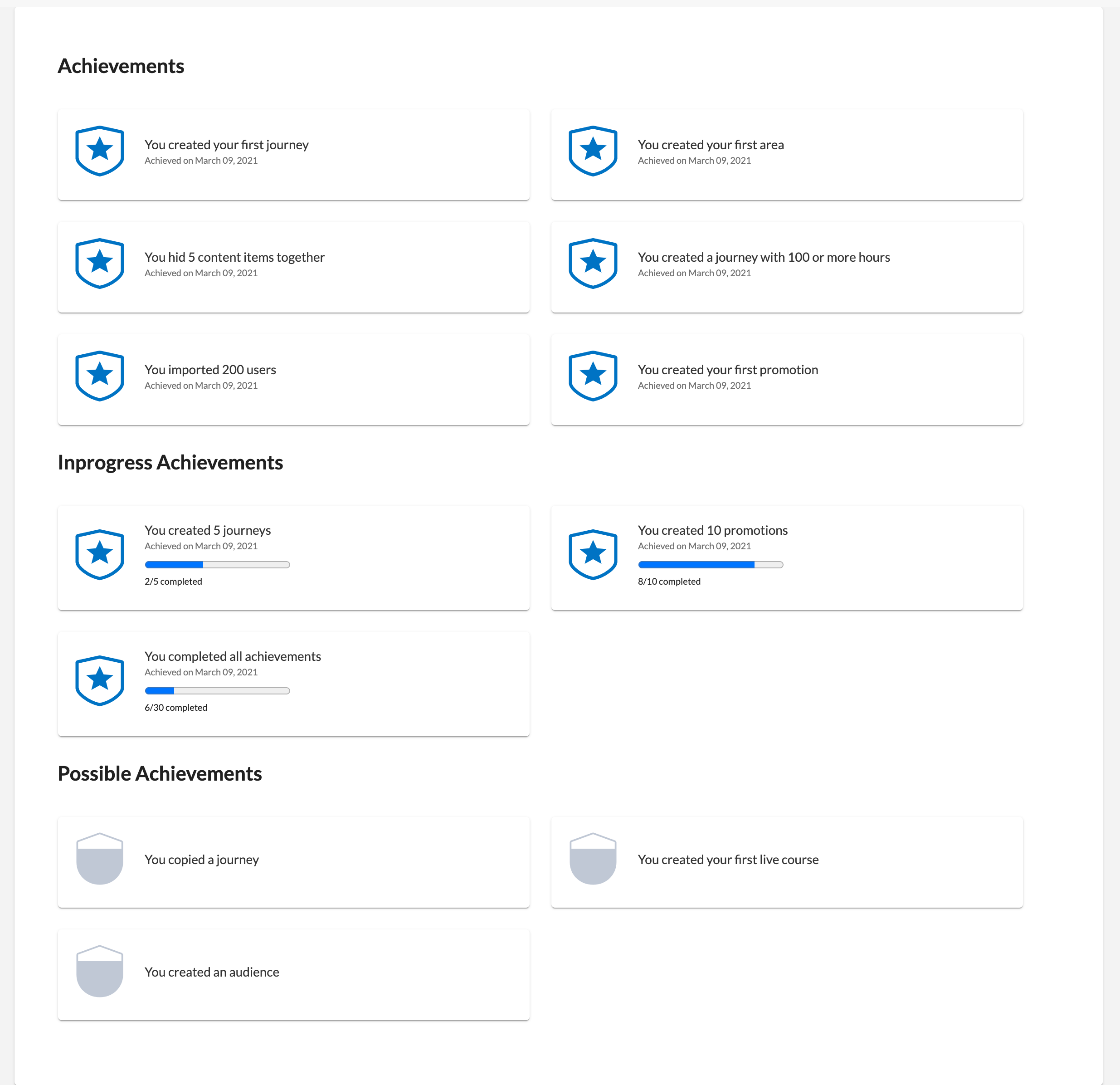
Percipio Gamification Strategy 2020-2022
The success of players like Duolingo means that many corporate training customers now expect learning apps to employ gamification.
In 2020, our gamification consisted of a clunky implementation of badges and nothing else. As the most experienced game designer on our UX team, I stepped forward to help shape strategy.

Theory & Perspective
I saw that our product managers had a whole slate of gamification features on their roadmaps. But there was no holistic perspective connecting them. Without it, we’d just be mindlessly duplicating gamification features offered by other platforms.
I’d won several major awards in my previous career as a board, card, and role-playing game designer. I’d collaborated and shared ideas with many other designers and had a deep knowledge of the field. So I started by putting a bit of theoretical muscle behind our gamification efforts.
One such project was developing a set of archetypes that help explain why and how users engage with gamification features. We could then back those archetypes up against our user personas to see which types were most prevalent, and then plan our gamification features accordingly.

Concepting
For one of our quarterly innovation events in 2020, a cross-disciplinary team interested in gamification briefly assembled. The lead was a dev with a passion for game design. He wanted to experiment with offering administrator users on our platform achievements for exploring the platform more and using features they might not normally use.
My contribution to this concept was as a game designer. I created an XP, level, and award progression, starting from traditional models inherited from RPGs and then tweaking it for our specific scenario.

Design Research
Skillsoft has a substantial global user base. When considering the visual design of rewards, we wanted to make sure we weren’t being too culturally specific. I conducted design research into trophies, badges, and awards used across a wide range of cultures to help us branch out from the typical medals and cups.

Playtesting & Gamification Economy
Just as the level of effort to get various rewards creates a game economy in games, so every app that uses gamification exhibits a gamification economy. In game design, we do this by playtesting — repeatedly playing the game, observing the results, and refining the rules until the game is fun to play.
You can do this for your app, too. I designed a simple board game based on Skillsoft Percipio. It models how users spend time using the app to learn, based on how much time it takes in the real world to earn a badge, achievement, or other reward. By playing the game, we garner a qualitative viewpoint on whether the rules of our gamification are promoting the type of user behavior we desire.